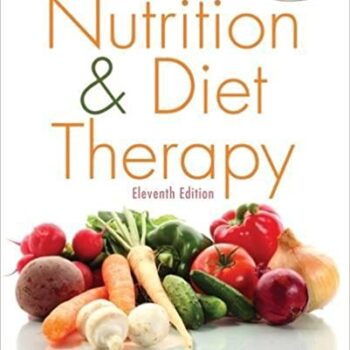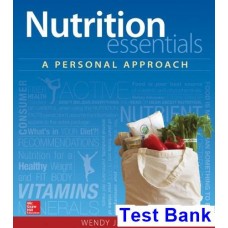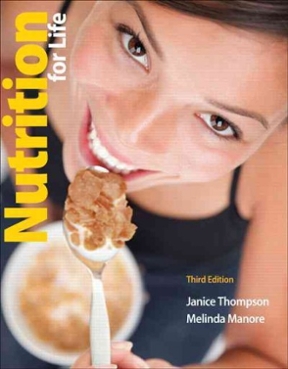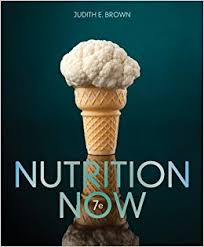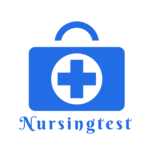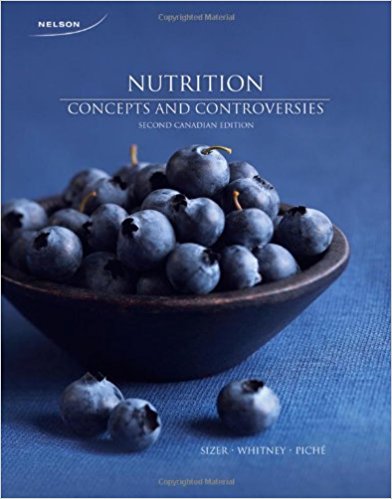
Test Bank For Nutrition Concepts And Controversies 2nd Edition by Ellie Whitney Frances Sizer
Original price was: $75.00.$25.00Current price is: $25.00.
Digital item No Waiting Time Instant Download
It is paramount to learn nutrition to the fullest extent possible. This assists us in attempting to make educated decisions regarding the diet we abide by and how we utilize that diet. The two authors, Whitney and Sizer in the book, “Test Bank For Nutrition Concepts And Controversies 2nd Edition” explain these concepts with relative ease. This test bank is invaluable in reinforcing the subject since it contains very vital questions and answers concerning the subject of nutrition.
Why Use a Test Bank?
Utilizing a test bank can go a long way in improving your learning. It contains many question types aimed at assessing your understanding of the material. With the aid of these questions, one can determine which areas require further reading and where the knowledge has already been cemented. There is a clear correlation between the design of this test bank and the textbook ensuring that you are working on the most pertinent areas.
Key Topics Covered
- Nutrition Basics: Define and explain the basic principles of nutrition including the macro and micronutrients complex. Understand the role of these nutrients in the body and in promoting health. This particular section lays down the invulnerable structure that explains the role that different food types play in our bodies and why they have to be aligned in a balanced diet.
- Dietary Guidelines: Investigate the most current dietary guidelines and how they relate to meal preparation. Asks how experts and authorities view nutrition and what the aim of eating is. In this context, these guides will allow you to make better food decisions that are beneficial to your health.
- Metabolism and Energy Balance: Metabolism is a science and how the body utilizes food for energy must be understood. The scope covers the impact of metabolism on weight control and well-being. With metabolism in perspective, people will be able to plan for diet and physical activities more appropriately.
- Vitamins and Minerals: Identify the vitamins and minerals that are vital to the normal functioning of the human body. Each nutrient’s function and what happens if there are deficits are explained. It can help to know what food contains plenty of these nutrients which can be helpful to achieve balanced nutrition.
- Controversies in Nutrition: Discuss issues and disagreements in the methodology in reaboutition. This bank of questions can invoke the aspect of analysis in what is otherwise a complex domain of nutrition science. It is hypothesized that there is an increase in knowledge and stiff competition among the players in the field.
Advantages of the Test Bank
A test bank is a collection of test questions, but that is not all it is — it is a resource for success. Through the use of this particular resource, one can accomplish the following:
- Boost Examination Results: There are high chances that a test bank would help improve one’s exam performance or even result in a far higher confidence level. With sufficient practice, an individual will be able to know the sorts of questions s/he is likely to face.
- Deepen Knowledge Retention: The in-depth information provided for every response allows one to virtually learn more about advanced areas that may have seemed quite complex. This is particularly useful when dealing with subjects that predispose the learner to various scenarios and thus different forms of knowledge application.
- Reduce Revising Efforts: Attempting to concentrate on only the relevant areas reduces the study time and exposure that one needs to have to be well prepared. With time, it should be possible to perform better with less time spent preparing.
- Encouragement to Try Harder: As familiarization proceeds and different materials continue to be practiced, learners become accustomed to different concepts and the ability to put them into practical applications. This can lead to an improvement where class results and overall examinations are concerned.
Summary
In conclusion, we recommend the book ‘Test Bank For Nutrition Concepts And Controversies 2nd Edition’ authored by Ellie Whitney and Frances Sizer to anyone studying nutrition. It gives a systematic way of revising and grasping such intricate concepts making sure that you are confident during the exams. This is one exam-related material that will allow you to add value to your study habits. Be it an individual aiming high in studies or an instructor trying to offer the best possible support to the learners, this test bank seems worthwhile to possess in a study package.
Test Bank For Nutrition Concepts And Controversies 2nd Edition by Ellie Whitney Frances Sizer
Chapter 2-Nutrition Tools—Standards and Guidelines
MULTIPLE CHOICE
1. Which of the following is an appropriate use for dietary reference intakes (DRI)?
a.
ensuring that maximum nutrient requirements are met
b.
estimating the nutrient needs of persons with medical problems
c.
planning diets for population groups such as military personnel
d.
estimating the inadequacy of an individual’s nutrient intake
ANS: C PTS: 1 REF: Page 30
2. Which of the following standards establishes population-wide average requirements used by nutrition policymakers?
a.
Daily Values (DV)
b.
Recommended Dietary Allowances (RDA)
c.
Recommended Daily Allowances (RDA)
d.
Estimated Average Requirements (EAR)
ANS: D PTS: 1 REF: Page 29
3. Which of the following statements about the dietary reference intakes (DRI) is the most accurate?
a.
They are for healthy individuals.
b.
They are based on a review of available testimonials.
c.
They are published by a committee composed of dietitians.
d.
They are maximum requirements, not recommendations.
ANS: A PTS: 1 REF: Page 31
4. For which of the following reasons would a nutrient NOT have a tolerable upper intake level (UL)?
a.
No food contains toxic levels of nutrients.
b.
Insufficient data exists to establish a value.
c.
No caution is required when consuming supplements of that nutrient.
d.
It is safe to consume in any amount.
ANS: B PTS: 1 REF: Page 30
5. Which of the following statements about Daily Values (DV) is the most accurate?
a.
They apply to healthy people only.
b.
They are the best way to compare the nutritional content of different foods.
c.
They are not yet required on Canadian nutrition labels.
d.
They are useful as nutrient intake goals for individuals.
ANS: B PTS: 1 REF: Page 33
6. Which of the following recommendations about oils and fats does the most recent version of Canada’s Food Guide make?
a.
Do not consume butter, lard, or shortening.
b.
Include at least 3 to 4 tbs (45 to 60 mL) daily.
c.
Choose soft margarines that are low in saturated fats and trans fats.
d.
Use vegetable oils such as coconut, olive, and palm kernel.
ANS: C PTS: 1 REF: Page 38
7. Which of the following food groups is located along the innermost arc of the rainbow depiction on the cover of Canada’s Food Guide?
a.
meats and alternatives
b.
milk and alternatives
c.
vegetables and fruits
d.
grain products
ANS: A PTS: 1 REF: Page 36
8. For which of the following elements of diet planning are exchange systems most useful?
a.
portion control
b.
adequacy
c.
calorie control
d.
balance
ANS: C PTS: 1 REF: Page 49
9. Which of the following is a key nutrient or other food component typically found in vegetables and fruits?
a.
vitamin B12
b.
trans fats
c.
fiber
d.
proteins
ANS: C PTS: 1 REF: Page 34
10. According to Canada’s Physical Activity Guide to Healthy Active Living, how long should individuals exercise each day?
a.
at least 50 minutes
b.
at least 40 minutes
c.
at least 30 minutes
d.
at least 20 minutes
ANS: C PTS: 1 REF: Page 34

